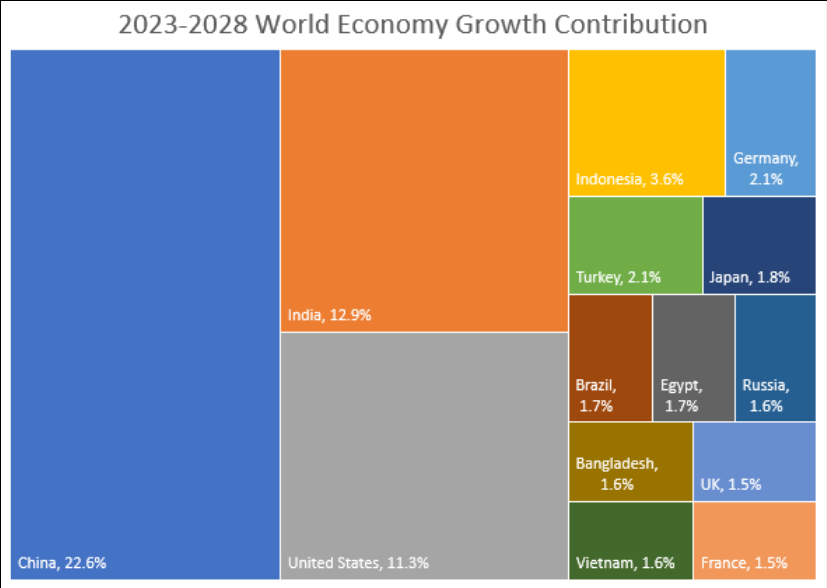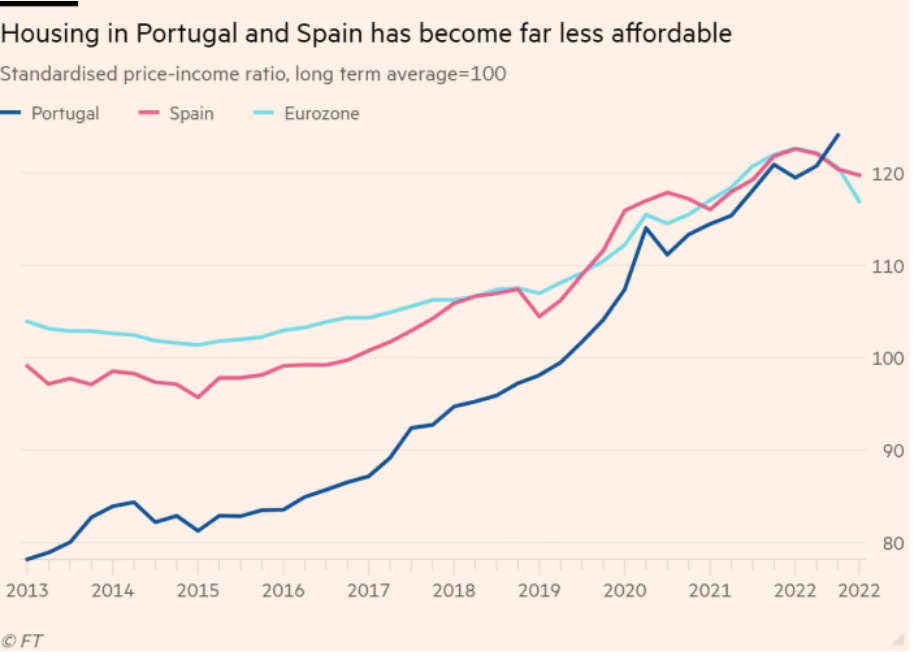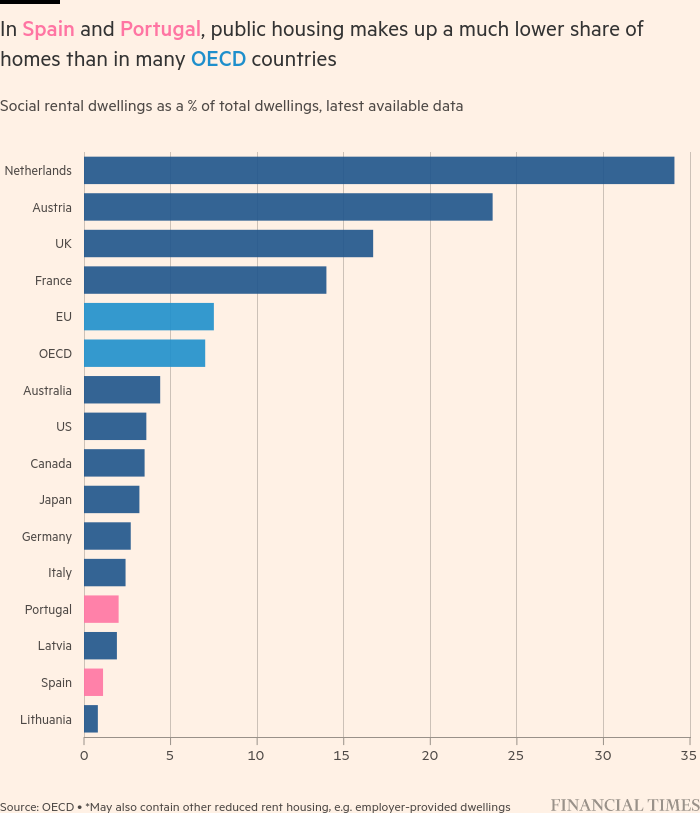April 18, 2023
China
It is graphs like the one below that make the USA's current U-Turn on global free trade policies understandable. China's impact on global growth and its position as a foundational pieces of the global economy cannot be overstated.
It makes for a very dangerous situation as the USA will continue to feel its manifest destiny being threatened.

Public housing
Spain plans to use a “bad bank” born of its most recent financial crisis to create up to 50,000 units of public housing as the country and neighbouring Portugal seek government-led solutions to the soaring cost of property.
[The bad bank was] established in 2012 to mop up the toxic assets of failing lenders after a real estate bubble burst four years earlier.
In an attempt to bring capital into the country, Portugal supported investment in the housing market from outside the country. One negative consequence was the increase in property values:

Given the room in the market for the expansion of public housing, it seems an obvious way to go for the government looking to bring down costs for working families. The reason for the low public housing numbers is that home ownership in Spain and Portugal are extremely high. The high rate of ownership is a result of low interest rates and slow population growth, especially in Portugal.

The Socialists are using the assets owned by their rescue package to build proper public housing, essentially using a crisis to expand state assets that support people instead of the other way around.
Canadian Manufacturing, immigration, and economic policy
Canadian manufacturing is trudging along barely growing (it actually declined last month). This is in spite of the government basically paying companies to produce. The reason is obvious, there is no reason to invest in manufacturing if capital do not think there is profit in it. Unless there is an upswing in manufacturing to match the rhetoric of the government on its climate and economic goals, we are going to be facing a continuation of the long recession since 2010.

The strange economic situation in Canada has always been that the country needs constant immigration or it runs out of workers and young people. It is a problem created by the economic policy in the country where immigration leads to a needed expansion of production and employment, but then all those workers retire. So, new immigration is need to fund that retirement. The logic is a uniquely capitalist one where immigration is not about community development but about exploiting workers to drive down wages to meet very short-term labour market trends.
In Canada, the government is targeting a big expansion in immigration, noting that the worker-to-retiree ratio is expected to shift from seven-to-one 50 years ago to two-to-one by 2035. It wants 465,000 new permanent residents this year (up from a record 405,000 last year), 485,000 in 2024 and 500,000 in 2025.
Immigration is great, but Canada selects who is allowed to immigrate based on skill-sets demanded by capital in the short-term. The policies are ones that fast-track certain qualifications and target those who have already been trained elsewhere. This leads to a situation of being out-of-step with global economic developments around production, a mis-match in skills of workers and demanded production as those global economic changes happen, and a constant increase in competition for short-term needed skills.
The current demand for front-line health workers, social service workers, skilled-trades, manufacturing workers, and farm workers is driving immigration in Canada. The governments of Canada are looking at short-term demands from capital, usually untethered from reality.
Instead, Canada should develop an industrial strategy, matched with a social support strategy and an education program that promotes a sustained population growth across the needed skill-sets for the future. An industrial strategy is needed that does not forget the historical obligation to Indigenous workers or assume all second generation Canadian want to become white collar ad workers for USA companies.
There is room on the Left for a policy that support manufacturing in-line with climate, health, social welfare, and sustainable community development. These take a very different approach to "industrial strategy" and a "competitive immigration market".